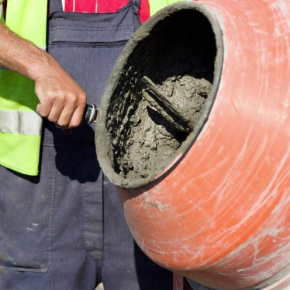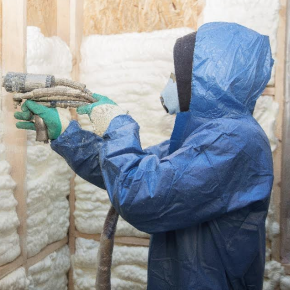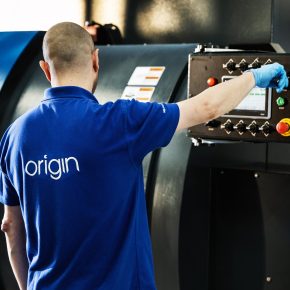
Key considerations for a garage conversion – Lidget Compton
The base is one of the most important elements of a concrete garage and, if built incorrectly, an unstable build, instead of a desired strong platform, could be the outcome. There are several factors to consider prior to converting a garage, which Lidget Compton discuss in this piece…
Dimensions
Firstly, look at the dimensions of the concrete and surroundings of the garage. Concrete garages from Lidget compton always ensure the surface of the base layer is at least four inches of compacted hardcore material and allow for an extra three inches around the perimeter for extra support.
Furthermore, many people often forget about the underground water level, which may affect the structure from beneath.
Lining the concrete base with a damp-proof sheet creates a waterproof seal stopping your structure succumbing to damages.
Cement
The second key factor to consider is the consistency of the cement used. In order to reach the perfect cement strength (also known as the Standard Consistency) the exact amount of required water must be added to form a paste.
This paste will be used on the base of the garage, so it is vital to ensure the exact amount of water is added, in accordance with the manufacturer’s instructions.

Weather
The next thing to consider is the weather conditions during the build, which could impact the cement consistency.
If it is raining, it is important to halt mixing or do so under cover to avoid any addition of rainwater which may change the cements consistency.
The cement base needs to be at least four inches thick on top of the compacted material and eight inches around the edges for extra support.
The following essential six step process can ensure you build a sound structure
1) Check the ground level, material substance and space
2) Accurately measure the consistency and depth of your cement
3) Start working on a dry day or at least make sure you are undercover out of the rain
4) Ensure the base layer is flat, consistent and level
5) Design the base layer to deflect water and add a waterproof sealant for additional protection
6) Allow 7 days for the concrete to set before building on top

Living Space
Garage conversions can be easy and often affordable, making them a very popular way of creating more space in a house, without any major building work. However, if a garage is being converted into a liveable space that requires warmth, it must have insulation.
One of the most crucial factors when beginning to insulate a garage is making sure it is completely airtight. Garages are not built to contain heat and, more than likely, lots of airgaps leading to the outside will be found.
The walls, ceiling, and doors of a garage can be insulated, but if the gaps are not filled, it will be an immense battle to keep the area heated.
When the place is completely sealed, all the windows and door frames need to be double checked, to make sure they are up to the task of preventing any drafts coming through.
The rate of how fast heat can be lost through an object is measured in U-Values. England, Scotland and Wales have different thermal standards, so it is important to meet the requirements that abide by the building regulations and standards.
The three main forms of insulation for a garage are as follows:
– Fiberglass Insulation
– Cellulose Insulation
– Foam Insulation
Ultimately, the decision is up to the person carrying out the project, when it comes to deciding which insulation material to use.
There are many different types of insulation to which satisfy different objectives.
Typically, a material which creates an air barrier is best to keep the cold air out. Insulations like fiberglass and cellulose do not do that, making foam insulation a popular choice.
Final Checklist
Perfecting the base and insulation are two of the most important considerations when constructing a secure and long-standing conversion.
Once they are in place, everything else will follow. Making a list of all key considerations to follow when converting a garage is a great way to achieve a successful build.
Lidget Compton has provided our very own checklist of key aspects to consider when looking to start a conversion.
– Always make sure the building is suitable to convert
– Check specific building regulations apply to the conversion
– Perfecting the base and the insulation is crucial for the durability of the conversion
– Ventilation will be required by building control
– Consider how electricity will be inputted
Once all of the above has been considered, the space will be ready to convert, in line with regulations, in order to ensure it is a comfortable and secure build for many years to come.
Latest news

21st November 2024
Altro distils style and performance at English Spirit
English Spirit Distillery has used an extensive package of Altro products front and back of house, in their new visitor centre café, shop and viewing area for the working distillery.
Posted in Articles, Bathrooms, Bedrooms & Washrooms, Building Industry News, Building Products & Structures, Building Systems, Case Studies, Floors, Interior Design & Construction, Interiors, Kitchens, Restoration & Refurbishment, Retrofit & Renovation, Timber Buildings and Timber Products, Walls
21st November 2024
Abloy UK creates bespoke locking solution for Secure Information Boxes
Abloy UK has supplied The Safety Letterbox Company Ltd with a bespoke Sentry CL811 Camlock for use in its Secure Information Boxes, assisting life safety and complying with new regulations and legislation for high rise buildings.
Posted in Access Control & Door Entry Systems, Architectural Ironmongery, Articles, Building Industry News, Building Products & Structures, Building Regulations & Accreditations, Building Services, Case Studies, Facility Management & Building Services, Health & Safety, Posts, Restoration & Refurbishment, Retrofit & Renovation, Security and Fire Protection
20th November 2024
CUPA: CUPACLAD enhances hotel aesthetics with a creative natural slate façade
Situated at the northern edge of a newly developed retail park near Bristol, the Abbey Wood Travelodge was conceived as part of the company’s new Budget-Luxe line of hotels – it features CUPACLAD, from CUPA PIZARRAS.
Posted in Articles, Building Industry News, Building Products & Structures, Building Systems, Case Studies, Cladding, Concrete, Cement, Admixtures, Facades, Posts, Restoration & Refurbishment, Retrofit & Renovation, Walls
20th November 2024
Origin launches in-house powder coating facility
Origin’s latest investment is set to redefine industry standards as it launches its own in-house powder coating facility.
Posted in Aluminium Products, Articles, Building Industry News, Building Products & Structures, Building Systems, Doors, Glass, Glazing, Innovations & New Products, Paints, Coatings & Finishes, Restoration & Refurbishment, Retrofit & Renovation, Site Preparation, Windows
 Sign up:
Sign up: